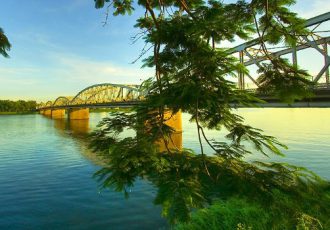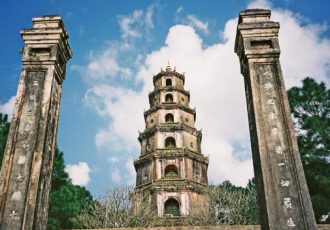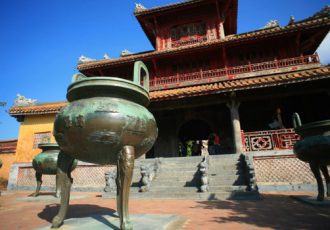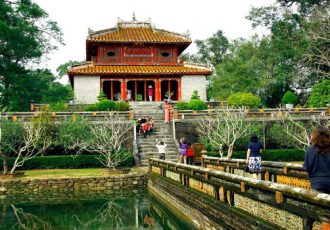The ancient imperial city of Hue in Vietnam
The imperial city of Hue is the former capital of Vietnam, it is located in the center of the country and not far from the sea, about 658km to the south of Hanoi and 1 097km to north of Ho Chi Minh City. This city is particularly known for its imperial city full of history.

The ancient capital of Hue today still retains its cultural heritages which represent the identity, the spirit and the soul of the Vietnamese people. The collection of monuments and relics of Hue has been classified as a world heritage site by UNESCO.
This amazing city is famous for its splendid citadels and palaces. One can see imperial tombs, pagodas and temples that were built during the Nguyen dynasty, which testify to the splendor of the last dynasty of the emperors of Vietnam. There is also the famous Perfume River – the source of inspiration of many poems and romantic tales. Hue is truly a city of medieval stories and dreams.
Weather in Hue
Hue’s spring months extend rom February to late April, this is when tourists can see the historic capital at its finest. But from June to July, be prepared for scorching days of the central of Vietnam.
This region is quite rainy. The rainy season arrives in August and can last until January. In general, it is still possible to get through the drops to make the visits! It should be noted that Huế does experience flooding, usually in October.
How to get to Huế?
Domestic flights from Hanoi and Hồ Chí Minh City land at Huế’s Phu Bai Airport, a 30-minute drive from the city.
Travelers can also take a train to Huế, take a bus or rent a private car from Đà Nẵng International Airport, which is a two-hour drive away.
What to do in Huế?
Visit the imperial city
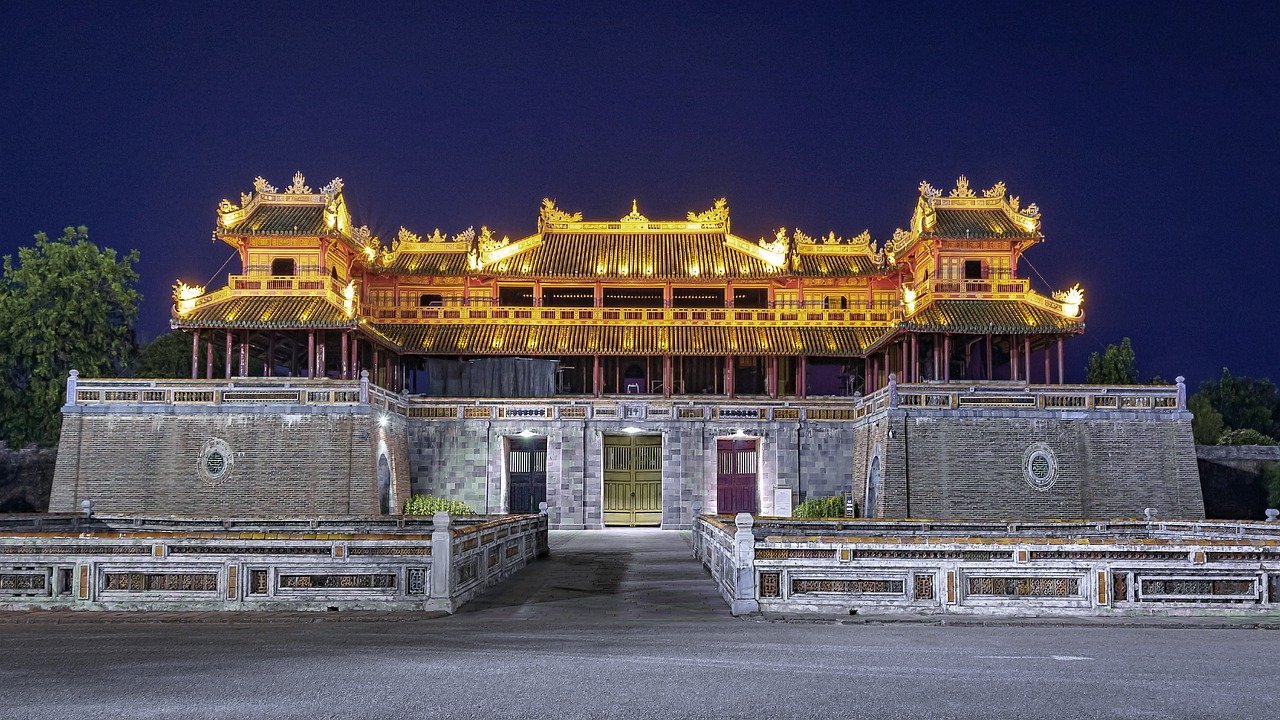
Get to know Vietnam’s last royal dynastic family by exploring what survived their 143-year reign. The Huế Monument Complex, with the Huế Citadel, is an extremely important area. Walk through its palaces, pavilions and theaters, and you can still feel echoes of life in the imperial court. Travel along the river to the tombs of Tự Đức, Minh Mạng and Khải Định which are wrapped in greenery and guarded by fierce mandolins, these tombs evoke a striking harmony between nature and architecture.
You can read a full article on the imperial city at the end of the article.
Eat like a royal!
The city of Huế is the gastronomic capital of Central Vietnam, having preserved the recipes of imperial court delicacies. You are never far from a world-class meal in Huế.
Stroll around the fresh produce at Đông Ba market and work up an appetite with Huế’s popular snacks, such as bánh khoai and bánh bèo.
Street vendors can roast you a bánh mì or prepare a bowl of fainting-worthy bún thịt nướng in seconds! There’s even a “vegetarian street” in Huế, proof of the city’s pious Buddhist roots. Foodies can’t miss the opportunity to try bún bò Huế in the dish’s hometown.
Explore the city’s Buddhist roots
The serene atmosphere of Huế is accentuated in its pagodas and monasteries. Từ Hiếu Monastery is where Buddhist author and activist Thích Nhất Hạnh spent his days as a novice monk. Here, the tombs of imperial eunuchs lie along the paths and lotus ponds, and monks play soccer in the late afternoon. Explore the iconic seven-level tower of Thiên Mụ Pagoda and Diệu Đế Pagoda.
Cycling in the rice fields
The photogenic streets and lush countryside of Huế are a cyclist’s paradise. The ride to the tile-roofed Thanh Toàn Bridge is one of the most captivating in Huế, winding through market gardens, footbridges and flocks of ducks. In town, take a walk through Lê Lợi and Bạch Đằng, one of Hue’s most iconic streets, to experience scenes of daily locald life. For a more leisurely option, call a xích lô (bicycle rickshaw) for a tour of the city.
Revisit colonial history
Travelers with an eye for architecture will enjoy seeing what remains of the French influence in Huế. Stroll through Lê Lợi to encounter five enduring colonial structures. You can’t miss the specific, art deco lines of La Residence Hotel, the majestic buildings of the Quốc Học High School, the arches of the Trường Tiền Bridge designed by Gustave Eiffel, and the veranda over the water of the Cercle Sportif.
Dirigez-vous vers les collines
Take a sip of fresh air and stretch your legs in the nearby hills. Thiên An, covered with pine trees, is the perfect place for a long lazy picnic. At sunset, join the locals in admiring the view from Vọng Cảnh hill. But if you are looking for a real workout, challenge yourself on the high trails of Bạch Mã National Park.
Discover the music of Huế
Hue is the place where royal music (Nhã Nhạc Huế) was born, along with existence of folk culture and court culture, such as hò and lý folk songs. Since November 2003, Nhã Nhạc Huế (the royal music) is classified as a world heritage site by UNESCO.
A word of advice
24 hours in Huế
Start as early as possible to see Thiên Mụ Pagoda, then visit one or more of the imperial tombs of Minh Mạng, Tự Đức or Khải Định. Refuel with a bowl of bún thịt nướng at Huyền Anh, before tackling the sprawling citadel of Huế.
Later in the afternoon, take a soothing walk around Từ Hiếu Monastery, then hop aboard a cyclo for a twilight ride.
48 hours in Huế
Fill up on an extremely satisfying bowl of bún bò Huế before diving into the excitement of Đông Ba market. Spend your morning cycling to Thanh Toàn Bridge or rent a vehicle to see the impressive tomb of Emperor Gia Long.
Back in town, have lunch with the locals at Hanh Restaurant, then experience a cultural overview at An Định Palace and Từ Cung Cung Residence. If you have time, walk along Lê Lợi Street, stopping for coffee sữa đá and any sites that catch your eye. Watch the sunset from Vọng Cảnh Hill or take an evening cruise on the Perfume River.
A little history
For nearly 400 years (1558-1945), Hue was the capital of several dynasties. Capital under the reign of Tây Sơn, and state capital of the Nguyễn dynasty. At that time all the elite of Vietnam chose to settle in this city to build a culture and an identity in the heart of a perfect natural landscape.
Huế is an important center of Buddhism. There are dozens of pagodas, some of which are more than 300 years old, in Huế and the surrounding area, as well as hundreds of temples dating from the beginning of the 20th century.
Feel free to check out our complementary articles below for a more comprehensive tour of Hue!


